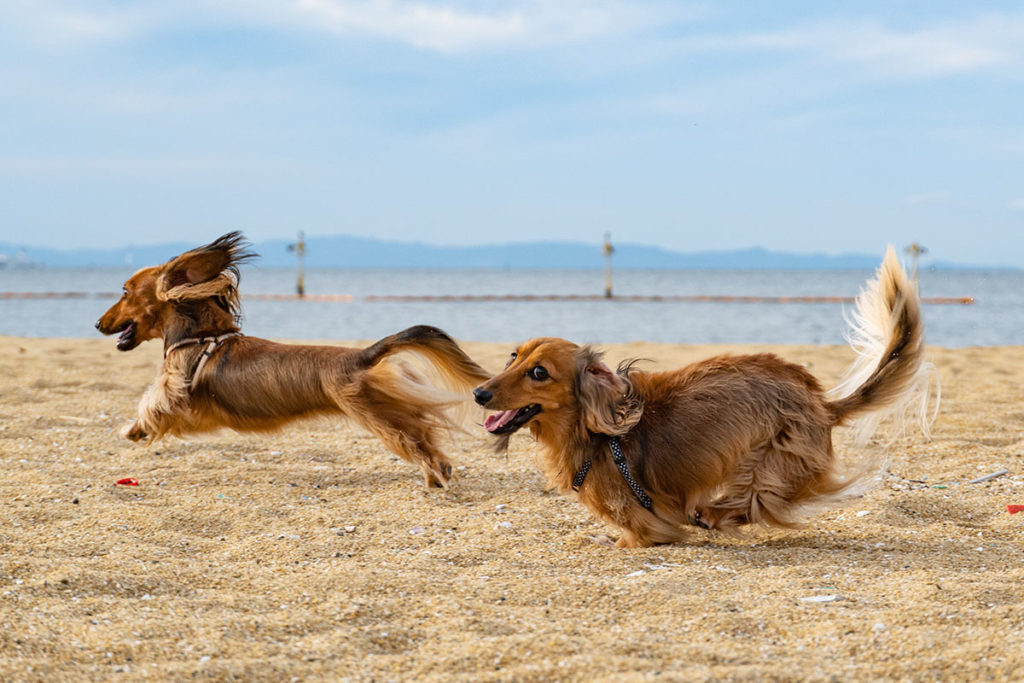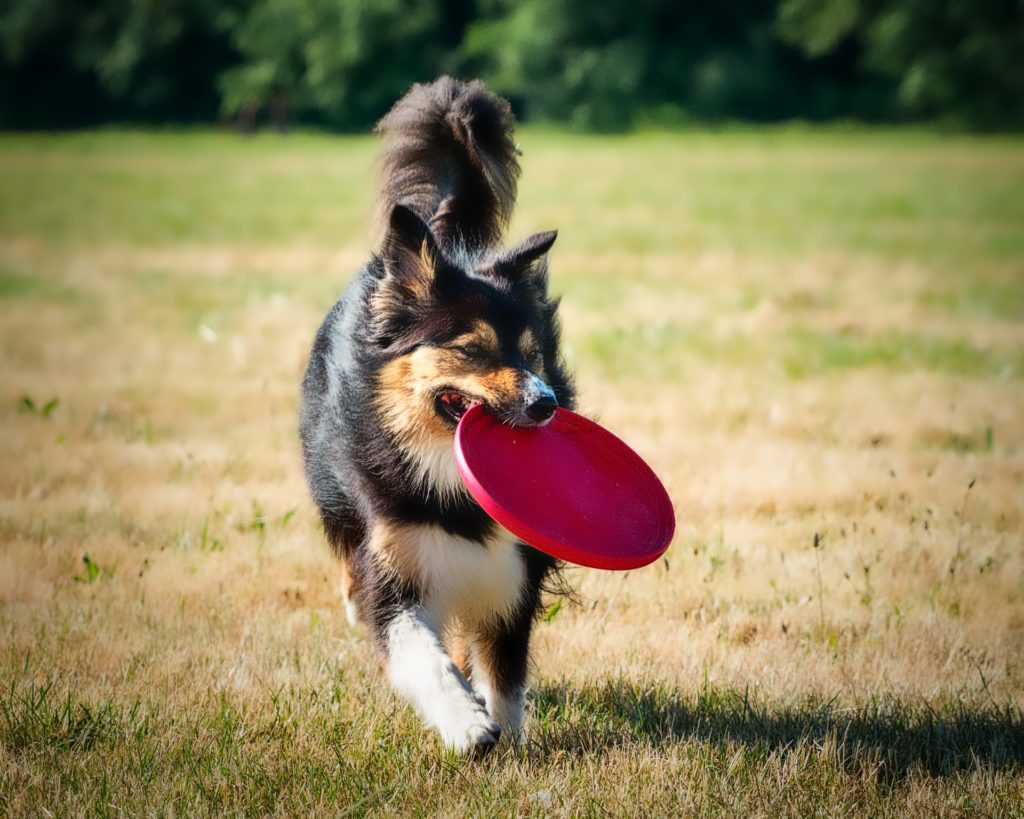Your dog doesn’t do what you want? Your dog doesn’t feel like it and prefers to lie around in his basket? Or are you looking for more fun for your dog because the usual walks are getting boring for you too?
We’ll help you and show you what you can do to prevent your dog from getting bored.
How can I recognise boredom in my dog?
A typical sign of boredom is a dog that lies listlessly in the corner and can hardly get up the nerve to do anything on its own. This behaviour can go so far that you have the feeling your dog is sick.
Especially active dog characters can unfortunately gain the experience at a young age, through clumsy communication from their humans, that they are not allowed to look for activities themselves.
This can frighten the dog and lead to him not wanting to do anything on his own. Your dog needs to be actively occupied.
But do not confuse this with disobedience. For example, if your dog doesn’t listen to you and you get angry, you should start somewhere else first.
Why is boredom not good in the long run?
You may object that you don’t have the time or inclination to actively entertain your four-legged friend. Surely just going for a walk should be enough?
There is a whole range of games to keep your dog challenged not only physically but also mentally. You can choose these according to your schedule.
It is better to have many short play sessions than one session that is far too long and exhausts the dog.
In addition to the right food, your dog needs to be kept in a manner appropriate to his species in order to achieve complete inner peace. This includes staying mentally and physically fit, as all dogs should.
How do I create variety?
In order to give your dog the right variety in everyday life, it depends on the age of the dog and the degree of boredom, as well as what your pet enjoys doing.
There is a whole range of play ideas. First and foremost are the basic commands. Don’t confuse boredom with disobedience. Your dog needs to be confident in the basic commands before you can move on to the game variations.
The basic commands include:
- Sit
- Stay
- Sit
- Here
- Heel
- Stand
- Down
You should have taught your dog the basic commands. Especially in everyday life, these commands are worth their weight in gold. Especially in dangerous situations, you can control your dog well and he will gladly listen to you.
But the basic commands are not enough to keep your dog bored. You want variety and that’s why we come to the playful part for your dog.

When do I play and practise with my dog?
The right time is whenever you and your dog feel like it. It doesn’t help if you are both longing for other things at the moment.
In order for your dog to get to know the new games properly, it is beneficial that you are fully present mentally and physically. Your dog will pay better attention to you and you will be better able to respond to the correct behaviour if you are feeling good.
If you have just had a stressful day, your dog will certainly cheer you up, but will also notice that you let mistakes pass more easily.
You can also use clicker play to help you be more specific when teaching your dog new commands.
Short sessions are enough for your dog to enjoy the game. Depending on the effort, up to 15 minutes is enough for a game. Here, too, the saying applies: brevity is the spice of life.
Which games are suitable for us?
You can choose from all the games the one that suits you best. If the dog brings you everything, fetch games are suitable. If you have a hunting instinct, search games are an excellent way for your dog to live out his natural behavioural repertoire.
You don’t have to look at these games separately. If your dog cooperates well and understands the game, you can combine commands.
Education is not neglected in the game, because your dog is learning new things during the execution.
You can distinguish between the following types of game:
- Fetch games
- Search games
- Intelligence games
- Skill games
- Circus tricks
Easy games for beginners
As absolute beginners, you can start with simple games. Maybe your dog is still completely inexperienced and you want to give him a quick sense of achievement.
Fetch and search games are suitable for this. Every dog likes to get involved and you can use your dog’s instincts.
Test yourself to see how far your dog wants to go. Don’t overtax your dog, he will be much more enthusiastic.

Fetch games
Any object that your dog already likes is suitable for retrieving. In addition to a ball, you can also use sticks, soft toys and slippers or similar objects.
Just make sure to use untreated objects.
The difficulty can be increased by letting your dog take over your everyday tasks.
This could be, for example, the newspaper from the letterbox, the washing from the chest of drawers or whatever you use regularly in your daily life.
If your dog likes to be in the water, the cool water is ideal for games of fetch, especially in summer. You throw balls into the water and your dog exercises his whole body when he swims.
Search games
Classic search games don’t have to be complicated. You can start with simple hide and seek. Your dog can learn to bring you an object on the command “Search”.
There are no limits to what you can do. The degree of difficulty can vary from the distance of the search object to elaborate hiding places. You can incorporate these search games both at home and on the move.
As long as your dog has to think along with you, he will enjoy it.
With search games, there is a danger that your four-legged friend will not see the relationship between you properly because you are throwing the things. He may look for his own reward and lack interaction with you.
Intelligence games
This type of play is suitable for all dogs, whether they are in good health or have an impairment. Here your dog has to think a lot more than with the other types of games.
In these games, your dog can think a lot. However, be careful not to anticipate your dog’s thinking too much.
For different shapes, choose two different objects, for example a circle and a rectangle. Your dog should see these and then learn to distinguish which object may be touched with the nose or paw.
Games of skill and circus tricks
There are no limits to your imagination when it comes to games of skill and circus tricks. Whether you think up new variations or build on your dog’s behaviour, the main thing is that you have fun.
The main thing here is to get your dog to think for himself and to use his body at the same time.

Always start with the easy and then move on to the difficult. This way you consolidate what you have learned so far and don’t mix up too much.
There is a wide range of possibilities:
- Push objects
- Giving paw
- Roll sideways
- Doing a roll over
- Run a slalom
- Course made up of different elements
Your dog can learn all the tricks you can think of. For example, you can teach your dog to push objects.
It is also possible to use your dog’s own characteristics for tricks. For example, yawning or licking are ways to teach your four-legged friend a trick.
With patience and calmness, every dog is happy about tasks that he is allowed to perform correctly and thus secures treats.
Can I offer variety without games?
Your dog will also be happy if you take him to other activities instead of the daily walk.
The following variants are also possible:
- Run with the dog on the bike
- Let the dog run with you when jogging
- Take the dog with you when inline skating
Basically, you can take your dog to all activities that you do alone.
How can I avoid boredom in the future?
Pick a handful of exercises that you repeat in turn. Maybe your dog’s fun will spur you on and you’ll come up with more great exercises.
Short but effective sessions are fun for your dog. Remember to give your dog enough breaks, because you don’t want to overtax him with too much play in the end.
You can also set fixed times, then it will become a routine. Every time you are at a certain meadow, there is a task.
Here we have summarized our most popular posts for you in a great overview:
- Dog doesn’t listen to his name
- Are dogs allowed to eat bananas?
- Are dachshunds family dogs
- How often do dogs need a haircut?
- Dog doesn’t want to go outside in rain
- Which dogs like to cuddle?
- Which dog is best for allergy sufferers?
- How much does a dog cost per month?
- Do dogs know when you’re angry at them?
- Where to leave your dog when at work
- How long can you leave your dog alone?
- How much exercise does a poodle need?
Conclusion – Boredom áde
Your dog looks forward to seeing you, because you always have something new in store. Your time together will never be boring, because now you know how to entertain your dog properly.
Whether it’s simple basic commands or intelligence games – it’s all in the mix. If you incorporate completely new commands into your daily routine alongside search games or fetch exercises, your dog will learn in a playful way and feel much more utilised.




